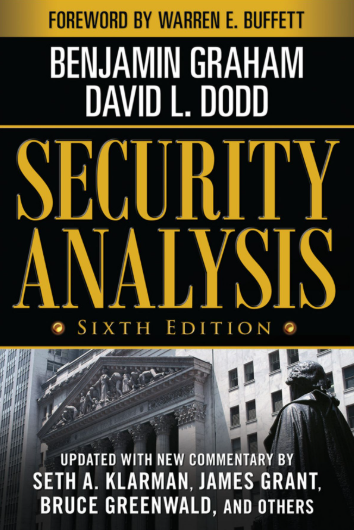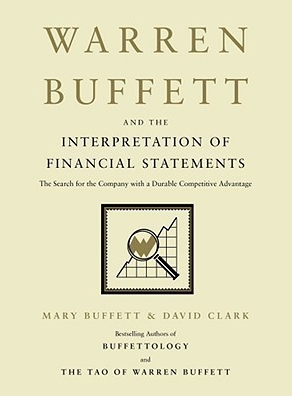Books to learn fundamental analysis are essential for anyone looking to make informed and strategic investments in the stock market. Whether you’re a beginner trying to understand company valuations or a seasoned investor aiming to sharpen your stock-picking skills, these handpicked books provide a deep dive into financial statements, ratios, economic indicators, and intrinsic value calculations. In this article, we explore the top 5 best books to learn fundamental analysis for beginners and investors in 2025, complete with detailed explanations and why they are must-reads.
Table of Contents
Top 5 Right Books To Learn Fundamental Analysis
1. The Intelligent Investor by Benjamin Graham
The Intelligent Investor by Benjamin Graham is a timeless classic that lays the foundation for value investing. Known as the “Bible of investing,” the book teaches readers how to analyze stocks based on their intrinsic value rather than market trends. It emphasizes risk management, long-term planning, and investor psychology. With principles like the “margin of safety” and insights into defensive vs. enterprising investing, it’s a must-read for anyone seeking smart, sustainable wealth-building through fundamental analysis.
Why It’s Ideal for Fundamental Analysis:
- Introduces key concepts like intrinsic value, margin of safety, and market fluctuations.
- Focuses on the difference between investing and speculating.
- Offers timeless advice relevant across decades.
Special Features:
- Case studies and real-life examples.
- Commentary by Jason Zweig provides modern context.
- Emphasizes investor psychology alongside financial fundamentals.
Ideal for: Beginners and long-term value investors who want a strong foundation in analyzing stocks fundamentally.
Book | Key Insights | Ratings | Price |
|---|---|---|---|
 The Intelligent Investor by Benjamin Graham | Understand market fluctuations, investor psychology and disciplined approach to long-term investing |  4.5 Out of 5 |
2. Security Analysis by Benjamin Graham and David Dodd
Security Analysis is a groundbreaking work by Benjamin Graham and David Dodd that introduced the core principles of value investing. Originally published in 1934, the book provides a deep dive into analyzing financial statements, understanding intrinsic value, and identifying undervalued securities. It focuses on thorough research, margin of safety, and disciplined decision-making. Ideal for serious investors, this classic remains a vital guide for evaluating stocks and bonds with a strong emphasis on long-term investment success.
Why It’s Ideal for Fundamental Analysis:
- Offers comprehensive methods for analyzing stocks and bonds.
- Discusses financial statement analysis, earnings power, and asset values.
Special Features:
- Advanced insights for serious investors.
- Highly detailed content suitable for academic and professional use.
- Emphasizes conservative investing.
Ideal for: Advanced investors and professionals who seek a rigorous and methodical approach to analyzing securities.
Book | Key Insights | Ratings | Price |
|---|---|---|---|
 Security Analysis by Benjamin Graham and David Dodd | investors with the timeless value investing philosophy and techniques |  4.7 Out of 5 |
3. Common Stocks and Uncommon Profits by Philip Fisher
Common Stocks and Uncommon Profits by Philip Fisher is a timeless investing classic that emphasizes qualitative analysis over just numbers. Fisher introduces the “15 Points to Look for in a Common Stock,” focusing on factors like management quality, innovation, and long-term growth potential. The book highlights a growth investing philosophy and the importance of understanding a company’s business deeply. It’s highly recommended for investors aiming to build wealth through thoughtful, long-term equity investments in high-quality companies.
Why It’s Ideal for Fundamental Analysis:
- Encourages investors to look beyond numbers.
- Introduces the concept of “scuttlebutt” research.
- Emphasizes sustainable growth and management integrity.
Special Features:
- Detailed 15-point checklist for evaluating companies.
- Real-world case studies and applications.
- Balanced focus on qualitative and quantitative metrics.
Ideal for: Investors interested in growth investing and qualitative aspects of company analysis.
Book | Key Insights | Ratings | Price |
|---|---|---|---|
 Common Stocks and Uncommon Profits by Philip Fisher | Use the “scuttlebutt” method—gather information from industry sources before investing |  4.3 Out of 5 |
4. Financial Statements: A Step-by-Step Guide to Understanding and Creating Financial Reports by Thomas Ittelson
Financial Statements by Thomas Ittelson is a beginner-friendly guide that breaks down the complexities of accounting and financial reporting. It offers a clear, step-by-step explanation of the three core financial statements—income statement, balance sheet, and cash flow statement. Ideal for non-financial professionals and novice investors, the book uses practical examples and illustrations to build a solid foundation in financial literacy, making it easier to analyze company performance and make informed investment decisions.
Why It’s Ideal for Fundamental Analysis:
- Teaches you how to read and analyze financial statements.
- Builds the groundwork for financial ratio analysis.
- Essential for calculating a company’s health.
Special Features:
- Simplified language and visuals for beginners.
- Real examples of financial documents.
- Guides on constructing your own statements.
Ideal for: Beginners who need a hands-on, easy-to-understand approach to financial report analysis.
Book | Key Insights | Ratings | Price |
|---|---|---|---|
 Financial Statements: A Step-by-Step Guide to Understanding and Creating Financial Reports by Thomas Ittelson | perfect introduction to financial accounting for non-financial managers, investors, business students, lawyers, lenders, entrepreneurs, and more |  4.6 Out of 5 |
5. Warren Buffett and the Interpretation of Financial Statements by Mary Buffett and David Clark
This book demystifies Warren Buffett’s approach to analyzing financial statements, revealing how he evaluates companies before investing. Mary Buffett and David Clark simplify complex accounting concepts, focusing on key metrics Buffett uses to identify strong businesses with durable competitive advantages. Ideal for investors and beginners, it provides practical insights into reading balance sheets, income statements, and cash flow reports, helping readers make smarter, Buffett-style investment decisions based on fundamental financial analysis.
Why It’s Ideal for Fundamental Analysis:
- Explains how Warren Buffett uses financial data to choose winning stocks.
- Highlights key financial ratios and what they mean.
- Offers insights into what makes a company truly valuable.
Special Features:
- Clear examples and Buffett-style interpretations.
- Focused on long-term investment criteria.
- Simple, practical tips to apply immediately.
Ideal for: Investors inspired by Warren Buffett who want a practical guide to stock analysis using financial data.
Book | Key Insights | Ratings | Price |
|---|---|---|---|
 Warren Buffett and the Interpretation of Financial Statements by Mary Buffett and David Clark | how reads income statements, balance sheets, and cash flow reports |  4.4 Out of 5 |
Why These Books Matter in 2025
Books to learn fundamental analysis remain crucial in 2025 due to increasing retail investor participation, the rise of long-term wealth planning, and volatile market conditions. These books are not just educational tools but also serve as frameworks for disciplined investing.
- Adaptable Across Market Cycles: Core principles are timeless and can be applied regardless of market trends.
- Critical for Portfolio Diversification: Help investors pick fundamentally strong stocks that provide long-term returns.
- Great for DIY Investors: Empower individuals to take control of their investment decisions.
Whether you are just starting out or are a seasoned investor, choosing the right books to learn fundamental analysis can transform your investment strategy. From Graham’s foundational theories to Buffett’s practical applications, these top 5 best books offer everything you need to understand the art and science of analyzing stocks.
Recommended Reading Order for Beginners in Books To Learn Fundamental Analysis:
- Financial Statements by Thomas Ittelson
- Warren Buffett and the Interpretation of Financial Statements
- The Intelligent Investor
- Common Stocks and Uncommon Profits
- Security Analysis
Equip yourself with the knowledge these books provide and take confident steps towards successful investing in 2025 and beyond.





